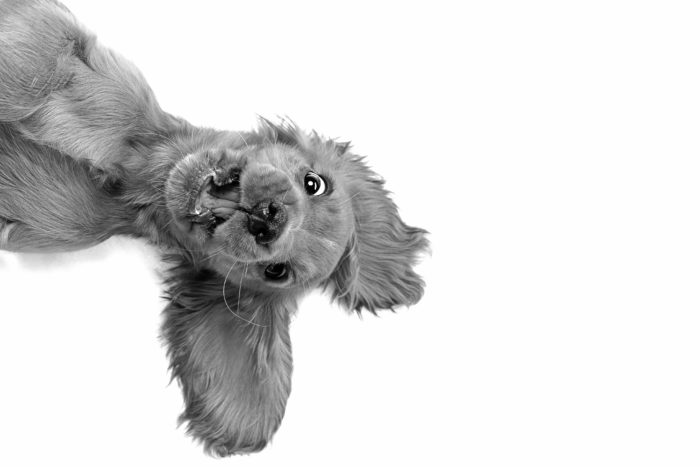Equipment List
The list below is provided as a guide. We encourage people to educate themselves, explore and understand the many different pieces of dog equipment, their uses, their advantages, and disadvantages.
Treats
We advocate working with food and explain in detail how this works in the How Dogs Learn section.
Treat Pouch
If you would prefer not to put dog food in your pockets, a treat pouch comes in handy and can be hooked on to your waistband for easy access to the food.
A Lightweight Collar and Harness
Lightweight means less weight for the puppy to haul around! Pick a collar that fits; you should be able to place two fingers under the collar when it is fastened.
Be sure to remove the collar from the puppy when he is in his crate. This is done as a safety precaution.
Positive Introductions
If it is the first time the pup will be wearing a collar or harness try this; show him the gear, next, offer a delicious treat. Do this about 10 times before you even put it on. This will help create a positive association with the gear. Do this with all of the different equipment he will need to get use to. Once you get the gear on him you can play a game that he enjoys to help make the experience positive and get his mind off of fussing (see Games).
Many puppies will scratch or paw, or sit and yawn (stress) when you place the collar, harness or leash on them. If you see your puppy doing this distract him with some tasty treats.
A Proper Fit
Fasten the collar so you can fit two fingers between his neck and the collar. It should not be tight, but it should not be so loose that the pup can scratch it off or that comes off over his head with tension from the leash. The same goes for a harness. All gear should be fit correctly and this will be an ongoing concern as the pup continues to grow.
Harness
There are a variety of harnesses on the market. A harness with a place to attach the leash in both the front and the back is something worth exploring. It can be a welcome aid in teaching an exuberant puppy not to pull when you are walking together. If you are interested in trying a harness, a good pet supply store will help you fit the correct size on your pup and allow you to take it for a test drive.
Light Weight Leash
Get a leash of the proper length, generally 6 feet. When you hold it at (your) belly-button level, it should hang down a few inches past where it is connected to your puppy’s collar or harness. There should be some slack in the leash while you are holding it in this position, but without the leash dragging on the ground.


Be sure that the buckles and snaps don’t weigh the pup down excessively. We recommend a snap that opens by pushing down with the thumb as opposed to pushing in. The snaps that open by pushing in can pinch the pup’s feet or toes if they step on the snap in a certain way.
Be sure that your leashes, long lines, collars and harnesses are all in good condition. It is smart to have an extra collar and leash. If the equipment gets worn or chewed, be sure to replace it.
Before you do any major amount of leading the pup around by the leash, attach it and let him just drag it around to get a feel for the weight and the strangeness of it. Like the collar, he will adapt quickly but it is important that you add treats to the experience of getting gear on and that you are patient and thoughtful as he learns to be comfortable with all this ‘stuff’ you want him to wear.

A Long Line (15′-30′ Long)
This is a fantastic piece of equipment to use in a big open space or on a trail. It provides freedom of movement for your puppy and lots of room to practice polite walking, recall, and games like retrieve and tug. Walks, where the puppy has the opportunity to simply meander and sniff, should be daily occurrences and the long line is just the piece of equipment for these sniffaris.

